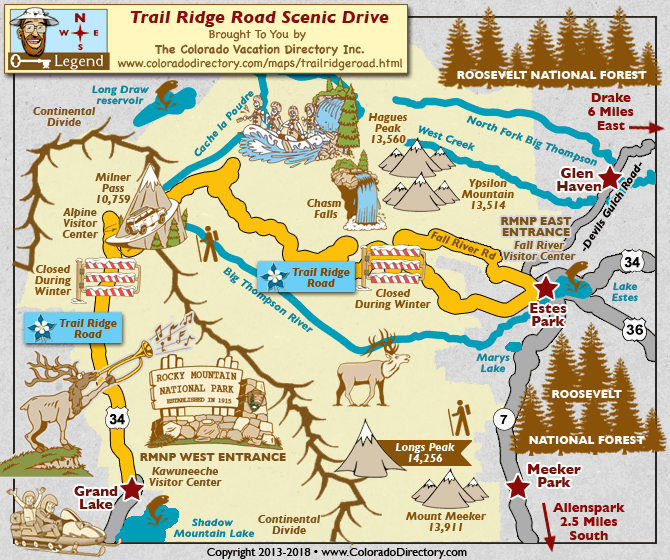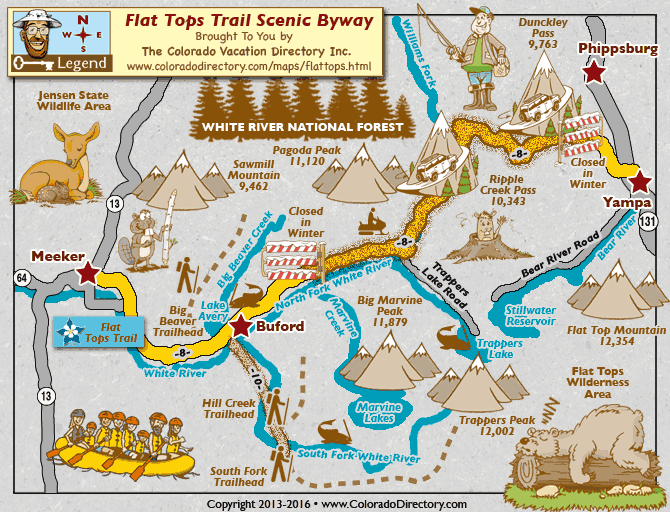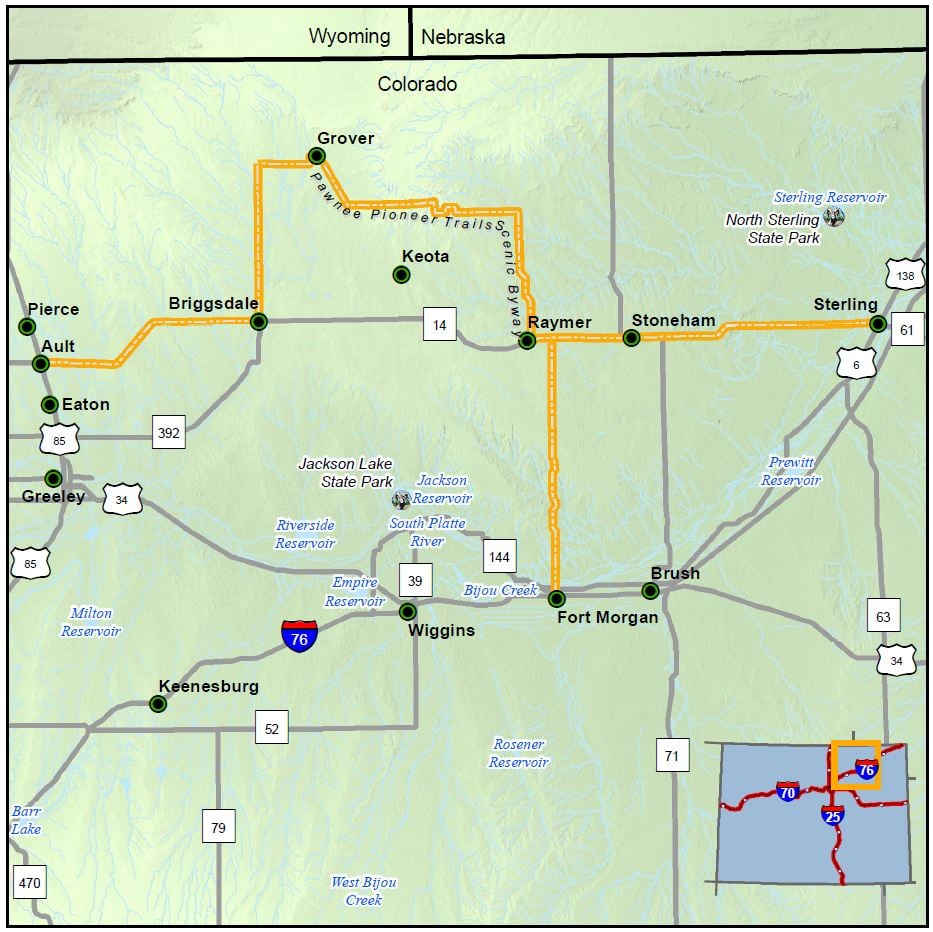
Where the Pavement Ends and the Story Begins: Colorado’s Scenic Byways
Colorado. The very name conjures images of jagged peaks scraping the sky, alpine meadows bursting with wildflowers, and rivers carving ancient canyons. While millions flock to its world-class ski resorts and iconic national parks, a deeper, more intimate exploration of the Centennial State awaits those who venture onto its designated Colorado Scenic and Historic Byways. These 26 carefully curated routes, weaving through the state’s most breathtaking landscapes and culturally rich regions, are not merely roads; they are portals to Colorado’s soul, offering a slow, immersive journey through its natural wonders, pioneering history, and vibrant communities.
Stretching over 2,600 miles, these byways are a testament to Colorado’s commitment to preserving and showcasing its diverse heritage. Each byway carries a dual designation – "scenic" for its unparalleled natural beauty and "historic" for the significant stories etched into its terrain. From the high-alpine tundra of Mount Evans to the ancient cliff dwellings of Mesa Verde, and the dinosaur bone beds of the Western Slope to the historic mining towns of the San Juans, these routes offer a kaleidoscope of experiences that demand more than a fleeting glance. They invite travelers to slow down, pull over, and absorb the essence of a state that truly lives up to its "colorful" moniker.
The Call of the Open Road: Why Byways Matter

In an age of instant gratification and GPS-driven efficiency, the Colorado Byways represent a deliberate counter-movement. They champion the art of the journey, not just the destination. "These roads are more than just asphalt and gravel; they are corridors to the past, present, and future of Colorado," says Emily Dawson, a cultural historian with the Colorado Historical Society. "They allow us to connect with the land, understand the forces that shaped it, and appreciate the resilience of those who settled here."
For many, the byways offer an escape from the mundane. They promise adventure, discovery, and a profound connection to the natural world. Imagine cresting a mountain pass to reveal an expanse of snow-capped peaks, their granite faces painted in hues of purple and gold by the setting sun. Picture yourself winding through a dense aspen grove, the golden leaves shimmering in the autumn breeze, or tracing the path of an ancient river, its waters still carving rock with patient persistence. These are the moments that define a Colorado byway experience.
Beyond the aesthetics, the byways are vital economic arteries for many of Colorado’s rural communities. They draw tourists off the interstates and into small towns, supporting local businesses, from family-run diners and independent art galleries to gas stations and quaint bed-and-breakfasts. The byways program fosters pride in local heritage and encourages the preservation of historic sites, ensuring that the stories of prospectors, ranchers, Native Americans, and pioneers continue to be told.
A Tapestry of Terrain: Iconic Byways and Their Stories
To truly appreciate the breadth of Colorado’s byways, one must delve into the unique character of a few standout routes:
1. The San Juan Skyway & The Million Dollar Highway: Often hailed as Colorado’s most spectacular drive, the 236-mile San Juan Skyway forms a loop through the heart of the San Juan Mountains, connecting the historic mining towns of Durango, Silverton, Ouray, and Telluride. Its most famous stretch is the Million Dollar Highway (part of US 550 between Ouray and Silverton), a breathtaking marvel of engineering carved into the sheer cliffs. The origin of its name is debated – some say it’s for the cost of its construction, others for the value of the gold and silver ore beneath it, and still others for the million-dollar views it affords.
Driving this segment is an experience in itself: narrow, winding, and often without guardrails, it demands respect and attention. But the reward is immense – vertiginous drops into forested canyons, panoramic vistas of fourteeners (peaks over 14,000 feet), and a palpable sense of the rugged determination that characterized the mining era. Silverton, a National Historic Landmark, feels like a step back in time, its streets echoing with tales of boom and bust. Telluride, nestled in a box canyon, balances its mining legacy with its status as a world-renowned ski resort and arts hub.
2. Mount Evans Scenic Byway: Reaching an astounding elevation of 14,130 feet, the Mount Evans Scenic Byway is the highest paved road in North America. This 28-mile journey begins just west of Denver, climbing through five distinct climate zones, from dense Ponderosa pine forests to subalpine and alpine tundra. The air thins, the trees shrink and twist into krummholz formations, and eventually, the landscape transforms into a vast, treeless expanse of ancient rock and hardy plant life.

The views from the summit are simply staggering – a 360-degree panorama of the Continental Divide, stretching as far as the eye can see. Visitors often spot bighorn sheep, mountain goats, and marmots in their natural habitat. This byway offers a rare opportunity to experience an alpine ecosystem usually reserved for seasoned mountaineers, all from the comfort of your vehicle.
3. Dinosaur Diamond Prehistoric Highway (Colorado Segment): For those fascinated by Earth’s ancient past, the Dinosaur Diamond Byway on Colorado’s Western Slope is a treasure trove. This route, shared with Utah, carves through an area renowned for its rich paleontological discoveries. Near Grand Junction, visitors can explore the Dinosaur Journey Museum, take self-guided tours of fossil quarries, and marvel at the massive dinosaur bones embedded in the Morrison Formation.
The byway also showcases the dramatic canyonlands and arid mesas characteristic of western Colorado, offering a stark contrast to the high-alpine routes. It’s a journey through geological time, revealing not only the remnants of prehistoric giants but also the power of erosion that continues to sculpt this rugged landscape.
4. Mesa Verde Country / Trail of the Ancients: Stepping back further in human history, the Trail of the Ancients Byway in southwestern Colorado leads to Mesa Verde National Park, a UNESCO World Heritage Site. Here, the Ancestral Puebloans built elaborate cliff dwellings and mesa-top pueblos, creating a sophisticated society that thrived for centuries before mysteriously disappearing around 1300 CE.
Mesa Verde is an archaeological wonder, offering guided tours into iconic structures like Cliff Palace and Balcony House. The byway extends beyond the park, connecting other significant archaeological sites and showcasing the rich cultural tapestry of the Ute Mountain Ute Tribe and Navajo Nation, whose ancestral lands are intertwined with these ancient ruins. It’s a powerful reminder of human ingenuity, adaptation, and the enduring mysteries of the past.
5. Collegiate Peaks Scenic Byway: Running alongside the Arkansas River and paralleling the Continental Divide, the Collegiate Peaks Byway is a paradise for outdoor enthusiasts. Flanked by an impressive array of 14,000-foot peaks (many named after prestigious universities), this route offers access to world-class whitewater rafting, fishing, hiking, and mountain biking. Historic towns like Buena Vista and Salida serve as vibrant base camps, offering a blend of pioneer charm and modern outdoor culture. The byway is particularly stunning in autumn when the aspens turn a brilliant gold, reflecting in the clear waters of the Arkansas.
The Spirit of the Journey: Beyond the Pavement
What truly sets Colorado’s byways apart is the invitation to engage more deeply with the environment. Interpretive signs along the routes provide historical context, identify geological features, and highlight local flora and fauna. Pull-offs and overlooks are strategically placed to offer the best photographic opportunities and moments of quiet contemplation.
Many byways connect to a network of hiking trails, from easy strolls to challenging climbs, allowing travelers to leave their vehicles and immerse themselves in the landscape. Ghost towns, remnants of Colorado’s frantic mining booms, offer eerie glimpses into a bygone era. Small museums, local eateries, and artisan shops in the byway towns provide opportunities to interact with the communities and support their unique cultures.
Challenges and Conservation: Preserving the Legacy
Maintaining these extensive routes through challenging terrain is no small feat. Colorado’s extreme weather, from heavy snowfalls to rockslides and flash floods, constantly tests the resilience of the roads. The Colorado Department of Transportation (CDOT) works tirelessly to keep them open and safe, a testament to the state’s commitment to the byways program.
Equally important is the emphasis on responsible tourism. The "Leave No Trace" principles are paramount: pack out what you pack in, stay on designated trails, respect wildlife, and minimize your impact on the delicate ecosystems, especially in the high alpine regions. As visitor numbers continue to grow, balancing access with preservation becomes an ever-present challenge. Education and awareness are key to ensuring these treasures remain unspoiled for future generations.
The Enduring Allure
Colorado’s Scenic and Historic Byways are more than just lines on a map; they are living narratives, constantly unfolding with every mile. They beckon the curious, the adventurous, and the contemplative. They offer a chance to witness the raw power of nature, to trace the footsteps of pioneers, and to connect with the enduring spirit of the American West.
Whether you’re seeking panoramic vistas, a deep dive into history, or simply the meditative rhythm of the open road, these byways deliver. They remind us that sometimes, the most rewarding journeys are those that take the long way around, allowing us to truly see, feel, and understand the magnificent tapestry that is Colorado. So, fill up your tank, pack your sense of wonder, and set out on a Colorado byway – where every turn is a revelation, and every mile tells a story.


